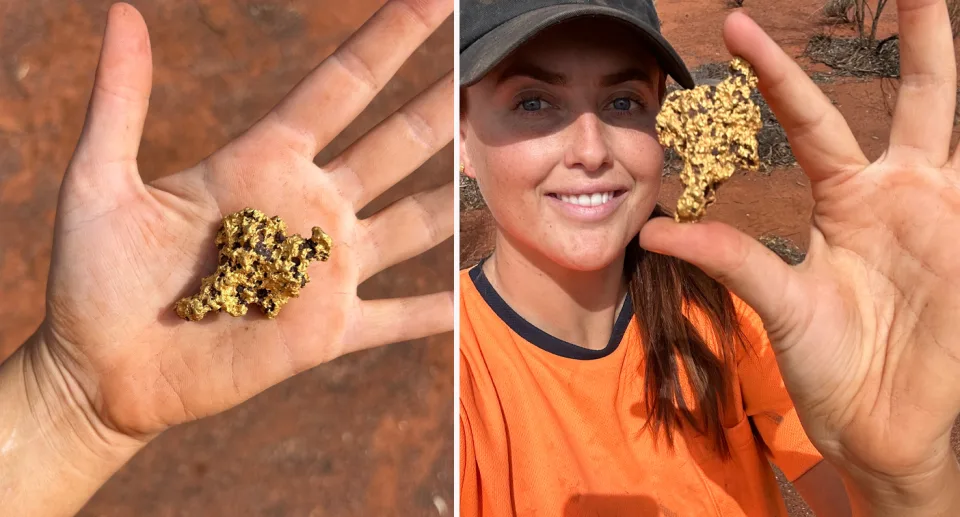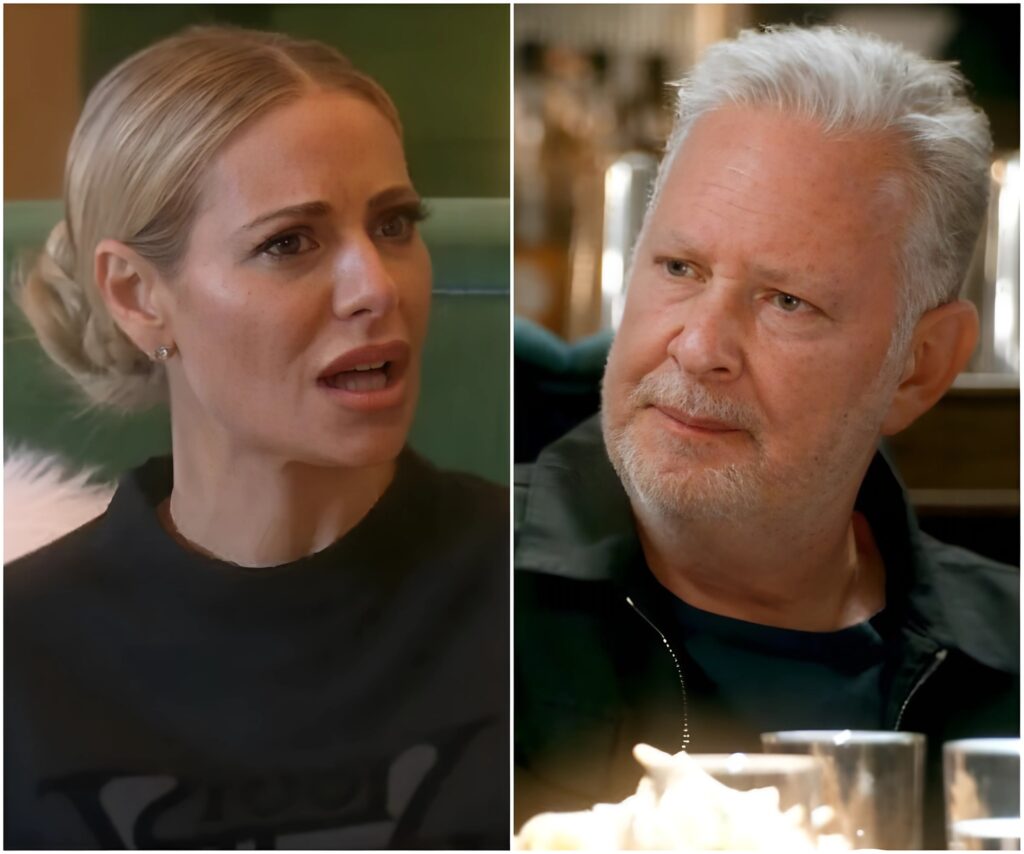
The 28-year-old explores the red dirt of Western Australia for gold, and her recent find has really paid off.
While most kids grew up playing with toys or riding their bikes with neighbours, Tyler Mahoney was mining for gold in the outback, sifting through red dirt for hidden treasures. And it’s paid off for the 28-year-old from Kalgoorlie, Western Australia, a fourth-generation gold prospector, who recently sold a mammoth nugget for a whopping $9,500.
“It’s a nice chunk of gold,” Mahoney told Yahoo News Australia.
The 28-year-old, who starred in the reality TV show Gold Rush, was thrilled when her metal detector beeped above the shining nugget last week, which she says is likely about 94 per cent pure or about 22-carat gold. Most of the time it’s the “really small pieces of gold” they find that pay her wage, she said.
WA’s long history of gold mining dates back to the 1880s, with the first gold rush sparked by the discovery of the ‘Golden Mile’ at Kalgoorlie in the 1890s. And nuggets this size are “getting harder and harder” to find so she feels exceptionally “lucky” with discoveries like this one.
“We could be seeing nuggets like four times a week and then we could go through a really big dry spell and not see a decent-sized nugget for six months,” she told Yahoo.
Because of this, there’s a “premium” when it comes to buying and selling chunks of alluvial gold — gold that’s moved away from its original source— which are worth about 30 per cent more than bullion, or refined gold, like ingots, coins and bars.
Golden nugget sold to investor for $9,500
So it wasn’t long before it was snapped up by a keen investor looking to add the 22-carat nugget to his impressive collection with a price tag of close to $10,000. Currently, gold is priced at about $3,000 per ounce in Australia.
“Most of our gold goes to a lot of international customers, but this one went to Queensland. A nugget this size is definitely worth a lot more kept as a natural nugget,” she said. “Because of how rare they are and how hard they are to find, there’s a really high demand for them and a low supply”.

Tyler once discovered an ironstone load with $100,000 worth of gold inside (right)
Booming market: ‘We’re pretty lucky’
The gold market, while it’s always been strong, has boomed in popularity of late, especially with people from Europe and the US who “love Australian gold”. Mahoney thinks it’s likely because “it’s stood the test of time” and there’s “so much unrest in the world” at the moment.
“Gold is pretty much in every Australian state, but Western Australia, Victoria and Queensland are the three biggest producers,” the professional gold digger explained. “We’re pretty lucky that we’ve got gold pretty much everywhere and Australians, we are known for our big gold nuggets.
“The idea of nuggets this size is to hold on to them as long as possible,” she said, insisting gold is a great investment.
What does a gold prospector do?
While there can be some “pretty dodgy people in the gold game” the full-time prospector said she’s lucky to have built up an audience that “trusts and knows” her. The youngster has garnered a social media following of over 200k followers who tune in daily to watch and learn from what she does.
On any given day Mahoney can be driving an excavator or separating gold from dirt using a heavy-duty dry blower. But working as a prospector, particularly in Australia, involves a lot of research too.
“Prospecting is the search of gold before you mine it, there’s a lot of reading the ground. We do a lot of research looking at geology and topography,” she explained.
“Our goal is to track that gold then find it and trace it back to the source — which is usually ironstone load or quartz reef. Then we would find the source. But over thousands of thousands of years, that source can kind of disintegrate and break up. So it might not be there anymore, or it might be far under the surface and we can never find it”.
Mahoney, who’s also written a book about her adventures, admits it’s “really addictive,” despite the sometimes 40-degree weather she has to contend with. But a lot has changed since her great-grandfather began mining for gold many decades ago.
“It’s changed in just about every aspect since then. Obviously, we’ve got a lot more technology now. It’s also getting a lot harder to find,” she said. “It’s also changed in that women are a lot more accepted in the mining game now”.



